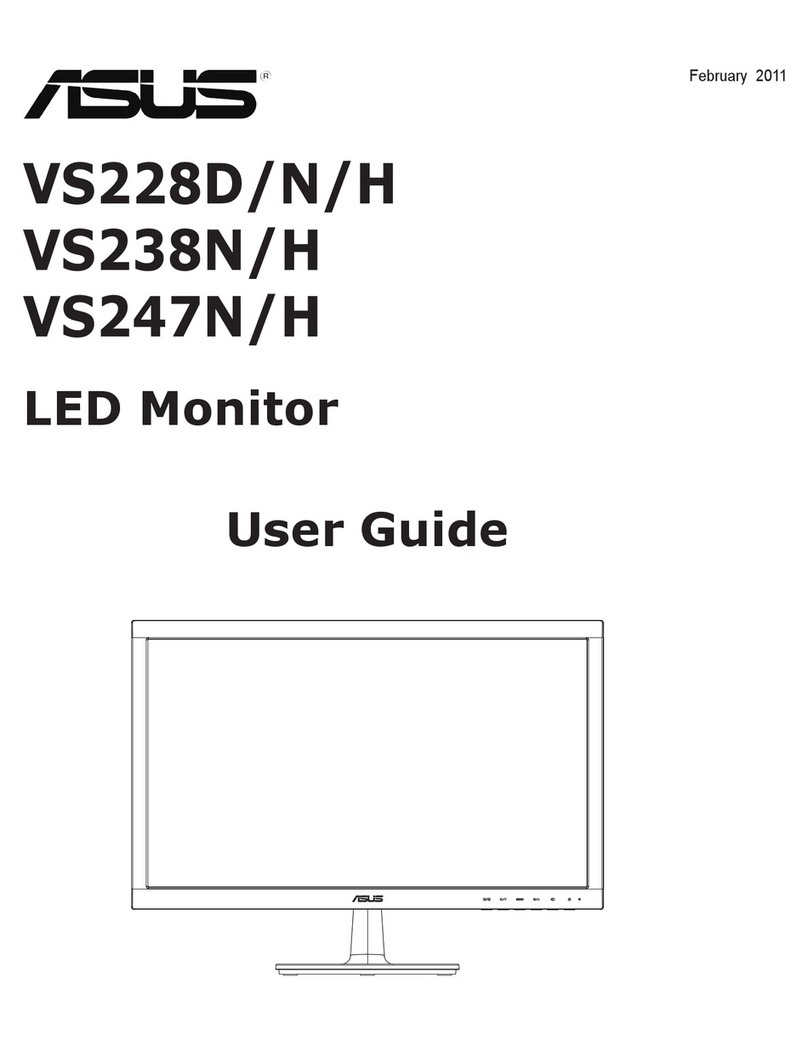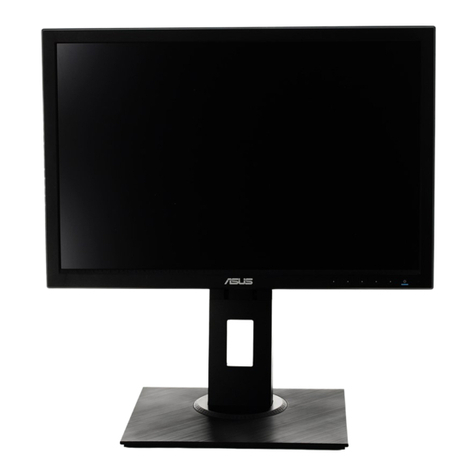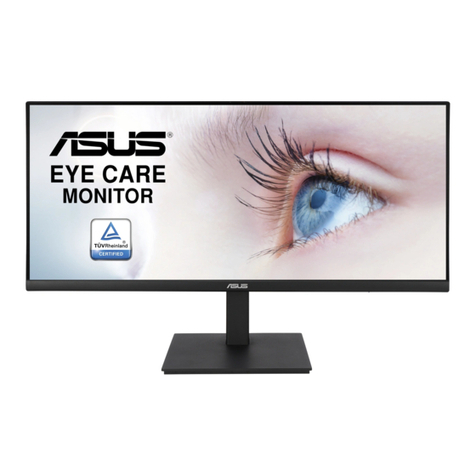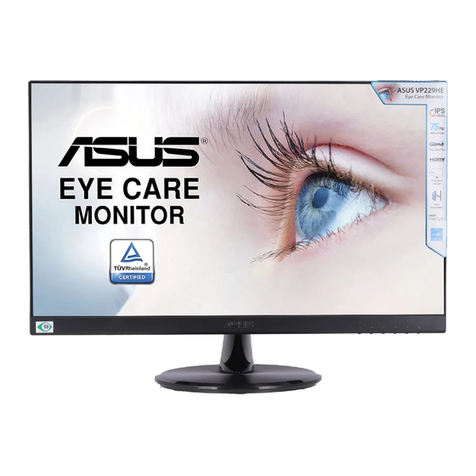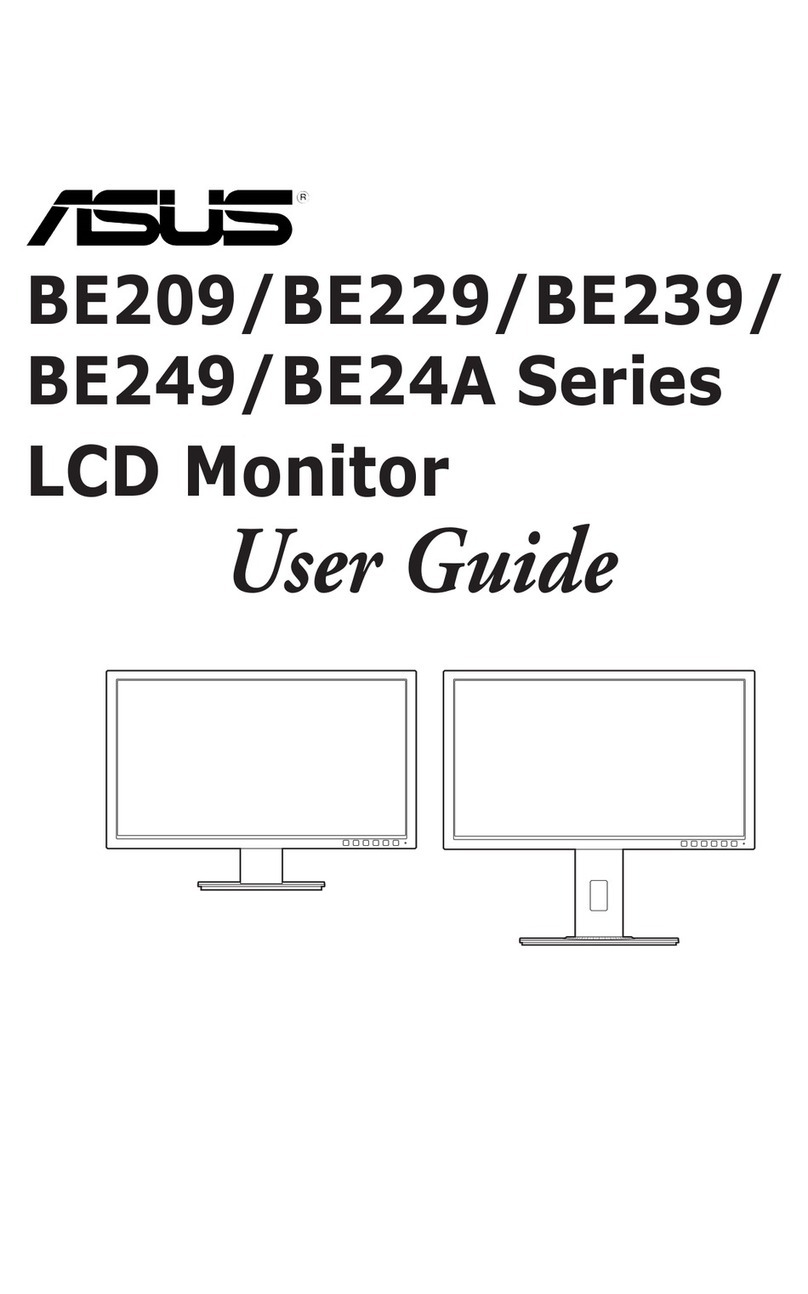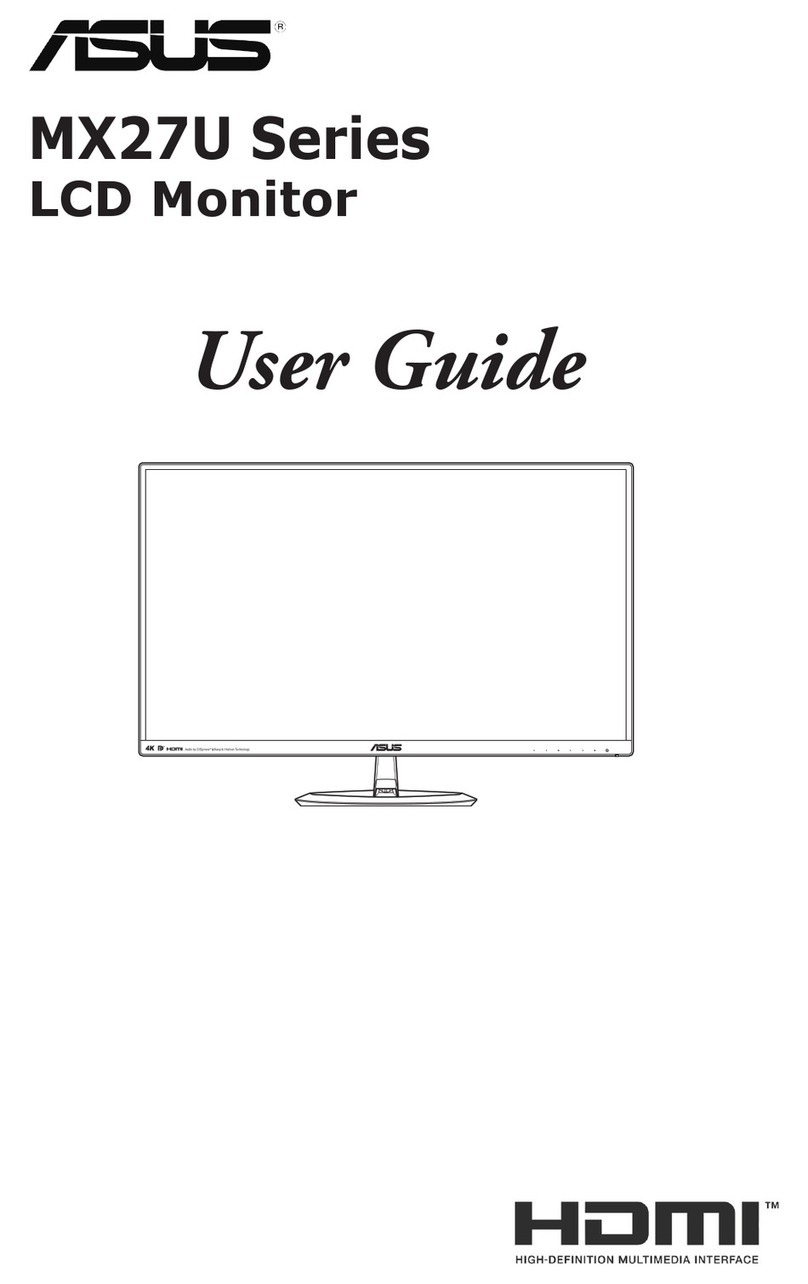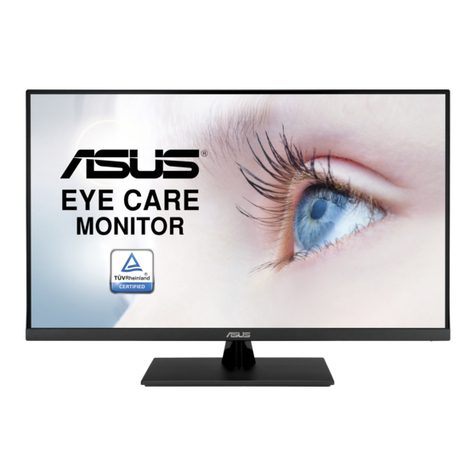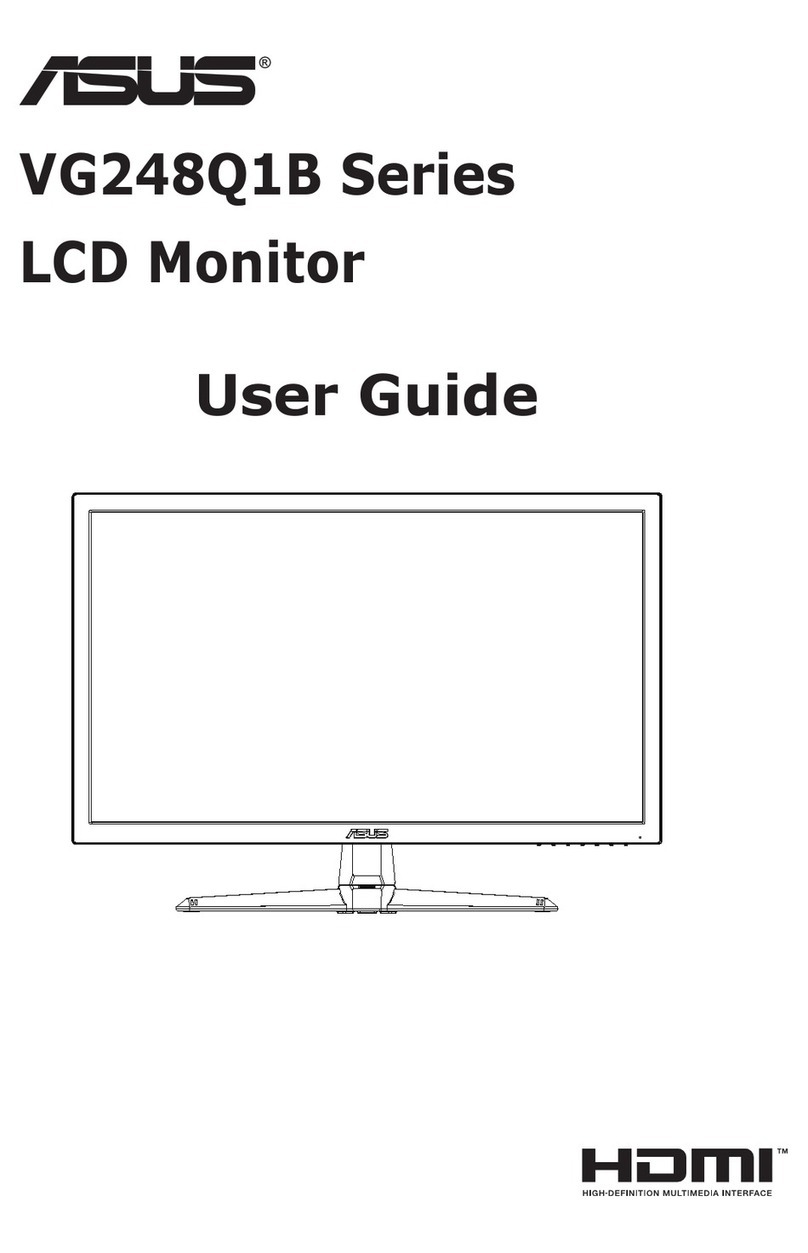
ASUS MM19S
2
Table of Content
Revision List…………………………………………………………………………………………………………. 3
1. Monitor Description…………………………………………………………………………………………….. 4
2. LCD Monitor Description……………………………………………………………………………………….. 5
3. Operating Instructions………………………………………………………………………………………….. 6
3.1 General Instructions…………………………………………………………………………………………... 6
3.2 Front Panel Control……………………………………………………………………………….…………... 6
3.3 Adjusting the Picture………………………………………………………………………………………….. 7
4. Input/Output Specification……………………………………………………………………………………... 9
4.1 Input Signal Connector……………………………………………………………………………………….. 9
4.2 Power Supply Requirements………………………………………………………………………………… 9
4.3 Factory Preset Display Modes……………………………………………………………………………….. 10
4.4 Panel Specification………………………………………………………………………………………….… 11
4.4.1 General Description………………………………………………………………………………….…... 11
4.4.1 Display Characteristics…………………………………………………………………………………... 11
4.4.2 Optical Characteristics…………………………………………………………………………………… 12
4.4.3 Electrical Characteristics………………………………………………………………………………… 13
5. Block Diagram………………………………………………………………………………………………….… 14
5.1 Monitor Exploded View………………………………………………………………………….……………. 14
5.2 Software Flowing Chart………………………………………………………………………………….…… 15
5.3 Electrical Block Diagram……………………………………………………………………………………… 17
5.3.1 Main Board………………………………………………………………………………………………... 17
5.3.2 Inverter/Power Board………………………………………………………….…………………………. 18
6. Schematic……………………………………………………………………………………………………….… 19
6.1 Main Board…………………………………………………………………………………………………….. 19
6.2 Power Board…………………………………………………………………………………………………… 25
6.3 Audio Board……………………………………………………………………………………….…………… 29
7. PCB Layout………………………………………………………………………………………………………. 30
7.1 Main Board…………………………………………………………………………………………………….. 30
7.2 Power Board…………………………………………………………………………………………………… 31
7.3 Audio Board…………………………………………………………………………………….……………… 32
7.4 Key Board………………………………………………………………………….…………………………... 32
8. Maintainability……………………………………………………………………………………………………. 33
8.1 Equipments and Tools Requirement………………………………………………………………………… 33
8.2 Trouble Shooting…………………………………………………………………………………………….… 34
8.2.1 Main Board………………………………………………………………………………………………... 34
8.2.2 Inverter/Power Board…………………………………………………………………………………….. 37
8.2.3 Keypad Board…………………………………………………………………………………………….. 39
9. White-Balance, Luminance adjustment………………………………………………………………….….. 40
10. EDID Content……………………………………………………………………………………………………. 42
11. BOM List………………………………………………………………………………………………………... 43
12. Different Parts List ……………………………………………………………………………………………. 58
http://www.wjel.net
